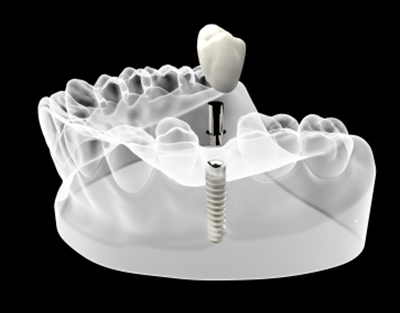
Missing Teeth? Let’s take care of it!
Inconvenient? Almost always. Embarrassing? Without a doubt. Fixable? Fortunately, yes!
Those who have to deal with the unfortunate happenstance of missing teeth know that the gaps are more than just embarrassing. Affecting overall health, missing teeth cause what can be irreversible damage to the structure of the mouth and face while causing gums to swell. Because biting force is also diminished, long-term effects include an increased risk of illness as many sufferers show a decrease in dietary nutrients over an extended period.
Dental Implants Are The Solution.
Fortunately, advances in modern dentistry now allow patients to enjoy affordable access to a long-term high-quality tooth replacement options. Designed and engineered to last a lifetime, porcelain dental implants give patients a highly reliable alternative to dentures. Covering the gap of just one missing tooth or restoring a full mouth, implants have given millions of Americans a whole new reason to smile.

A dental implant (also known as an endosseous implant or fixture) is a surgical component that interfaces with the bone of the jaw or skull to support a dental prosthesis such as a crown, bridge, denture, facial prosthesis or to act as an orthodontic anchor. The basis for modern dental implants is a biologic process called osseointegration, in which materials such as titanium form an intimate bond to bone. The implant fixture is first placed so that it is likely to osseointegrate, then a dental prosthetic is added. A variable amount of healing time is required for osseointegration before either the dental prosthetic (a tooth, bridge or denture) is attached to the implant or an abutment is placed which will hold a dental prosthetic.
Success or failure of implants depends on the health of the person receiving the treatment, drugs which affect the chances of osseointegration, and the health of the tissues in the mouth. The amount of stress that will be put on the implant and fixture during normal function is also evaluated. Planning the position and number of implants is key to the long-term health of the prosthetic since biomechanical forces created during chewing can be significant. The position of implants is determined by the position and angle of adjacent teeth, by lab simulations or by using computed tomography with CAD/CAM simulations and surgical guides called stents. The prerequisites for long-term success of osseointegrated dental implants are healthy bone and gingiva. Since both can atrophy after tooth extraction, pre-prosthetic procedures such as sinus lifts or gingival grafts are sometimes required to recreate ideal bone and gingiva.
The final prosthetic can be either fixed, where a person cannot remove the denture or teeth from their mouth, or removable, where they can remove the prosthetic. In each case an abutment is attached to the implant fixture. Where the prosthetic is fixed, the crown, bridge or denture is fixed to the abutment either with lag screws or with dental cement. Where the prosthetic is removable, a corresponding adapter is placed in the prosthetic so that the two pieces can be secured together.
The risks and complications related to implant therapy divide into those that occur during surgery (such as excessive bleeding or nerve injury), those that occur in the first six months (such as infection and failure to osseointegrate) and those that occur long-term (such as peri-implantitis and mechanical failures).
We provide the most comprehensive approach to dental implants.
(Endosteal) Individual Implants, For a single missing or broken-down tooth, our doctors will place a dental implant and top it with a crown.
- Implant Supported Bridges: To replace two or more teeth in a row, our doctors will often place implants to support a dental bridge. They can also place a series ofimplant-supported bridges to replace an entire arch of teeth.
- Implant-supported removable snap-in dentures: Our doctors will place a series of implants that firmly retain a custom-fabricated new denture in position through the use of special snap-in attachments. Implant-supported removable dentures provide between 50 percent and 75 percent of full chewing power. The dentures can be removed for cleaning or other care at any time.
- Implants to stabilize a current denture: Under certain circumstances, our doctors will fit your existing denture with snap attachments so the denture will fit into implants. Your denture will function similarly to a new snap-in denture and will have enhanced chewing power.
- Implant-supported fixed-in dentures with New Teeth in One Day: Using as few as four implants per arch for support, our doctors provide full-arch fixed-in new teeth with the New Teeth in One Day procedure. Implant-supported fixed-in new teeth will provide nearly full chewing power and will function very much like real teeth.

